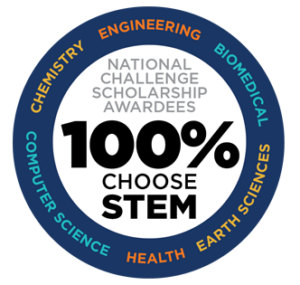In the rapidly evolving technological landscape, the need for STEM-educated students has never been more critical. According to the U.S. Department of Labor, STEM occupations are projected to grow by almost 11% by 2031, which is more than twice the growth rate for all other occupations combined.
As stated in the U.S. Department of Energy’s STEM Education Strategic Plan, “Tomorrow’s workers are today’s learners, and the learning experiences provided to them will directly impact how many decide to pursue STEM careers as well as how ready they will be to do so.”
Since 1989, CEF has been building this workforce through over 5 million student participants and $250,000 awarded in Challenge scholarships. 85% of students participating in the Challenge discovered new STEM career paths, and 92% increased their interest in STEM.
Why Start STEM Education So Early?
Research indicates that students transition from primary school to middle school with a high interest in STEM fields. However, by eighth grade, half of these students lose their enthusiasm and interest in STEM.
Programs like the Challenge are essential in bridging this gap, connecting classrooms to careers and ensuring sustained interest in STEM fields. And clearly, the Challenge has done that successfully, with 100% of Challenge winners pursuing STEM studies after high school.
Breaking Barriers, Creating Opportunities
With over 50% of participants being female and coming from economically disadvantaged schools, CEF is breaking barriers and fostering opportunities like never before.
Lexi K, a competition participant, is a shining example of the Challenge’s transformative power. Her proud parent reflects, “My daughter is from a rural community with limited opportunity, so the Challenge opened up doors. I am not sure she would be a chemical engineer without the Challenge.”
***
CEF has earned 4 stars on Charity Navigator, the highest rating an organization can receive in terms of cost-effectiveness and overall health of a charity’s programs, including measures of stability, efficiency, and sustainability.
| 2024 Annual Report | 2024 Public Disclosure |
| 2023 Annual Report | 2023 Public Disclosure |
| 2022 Annual Report | 2022 Public Disclosure |
| 2021 Annual Report | 2021 Public Disclosure |
























